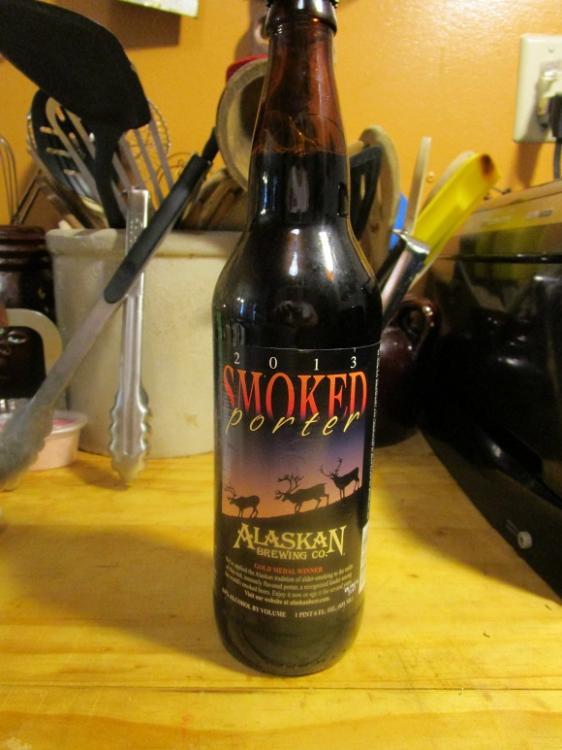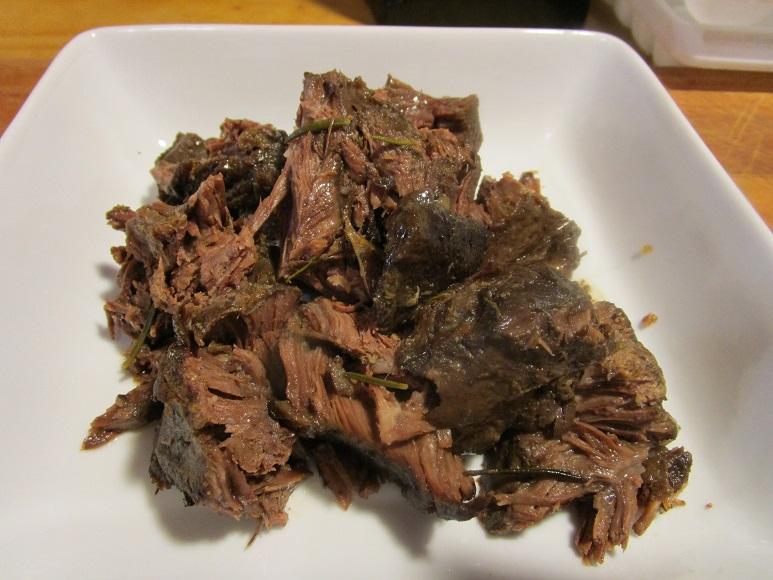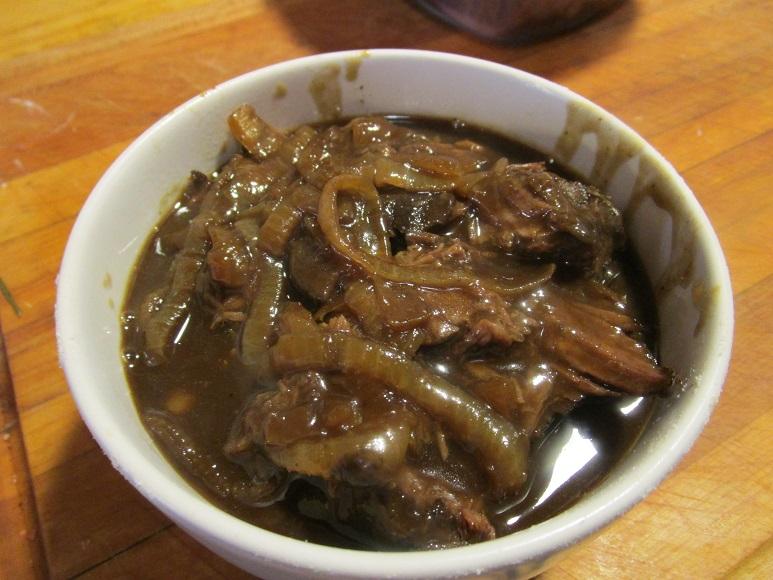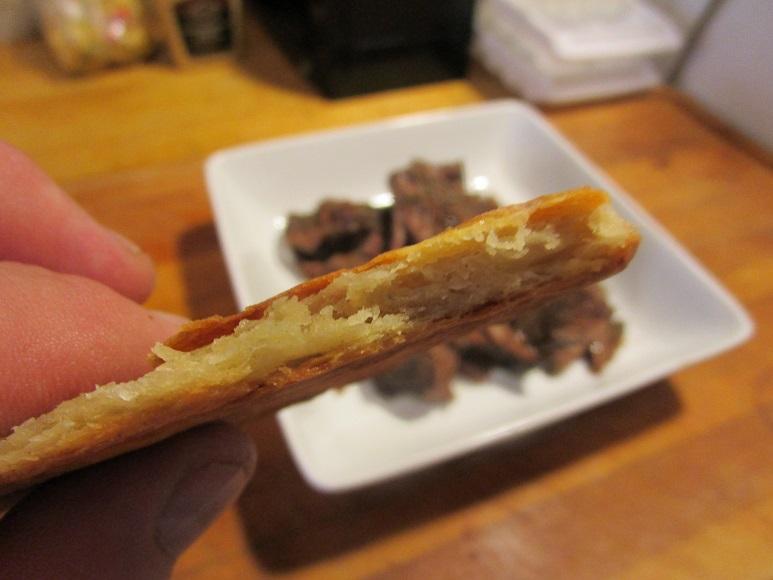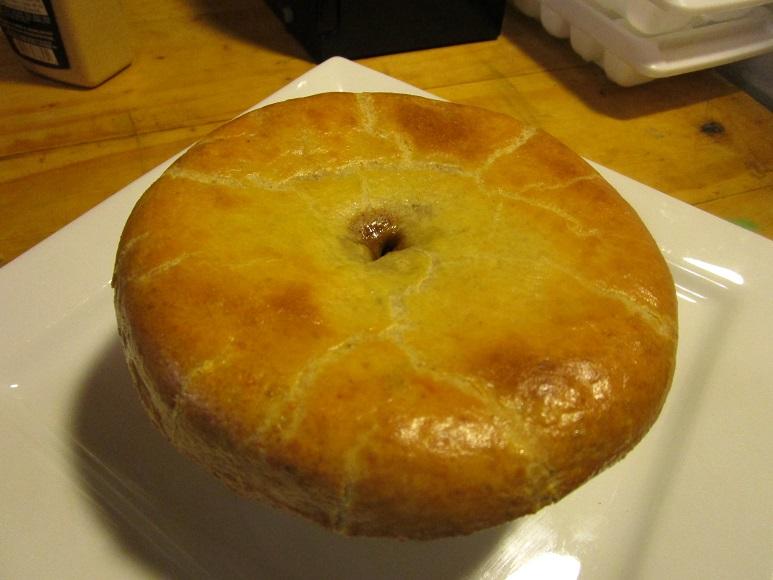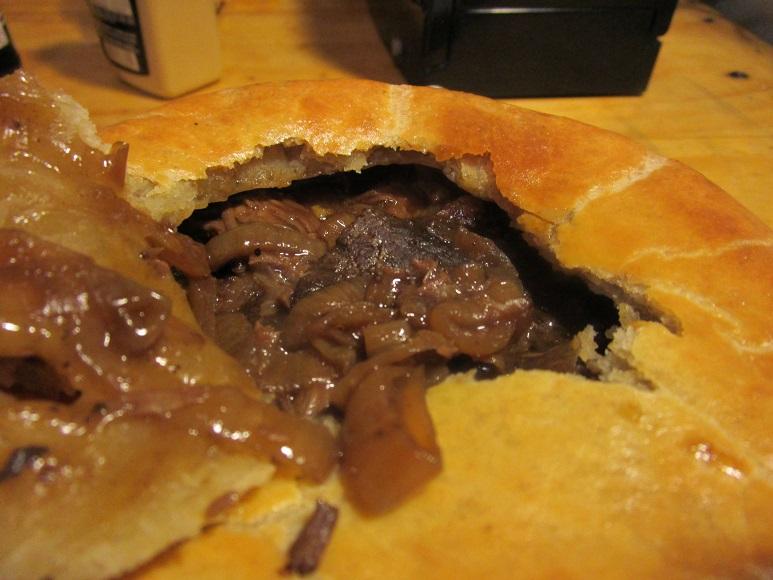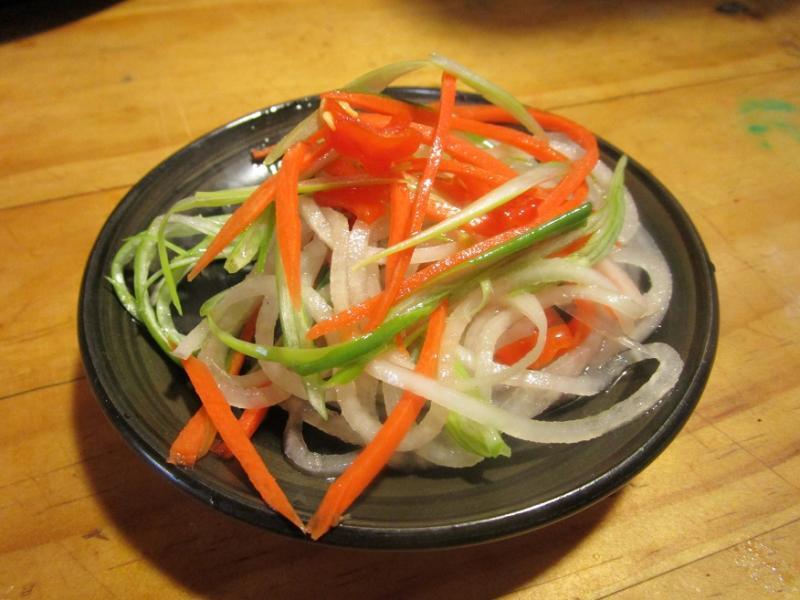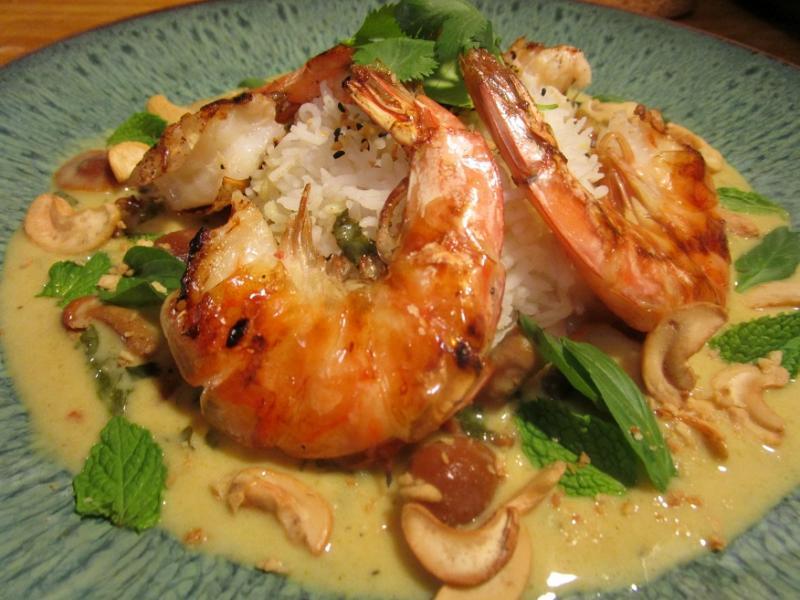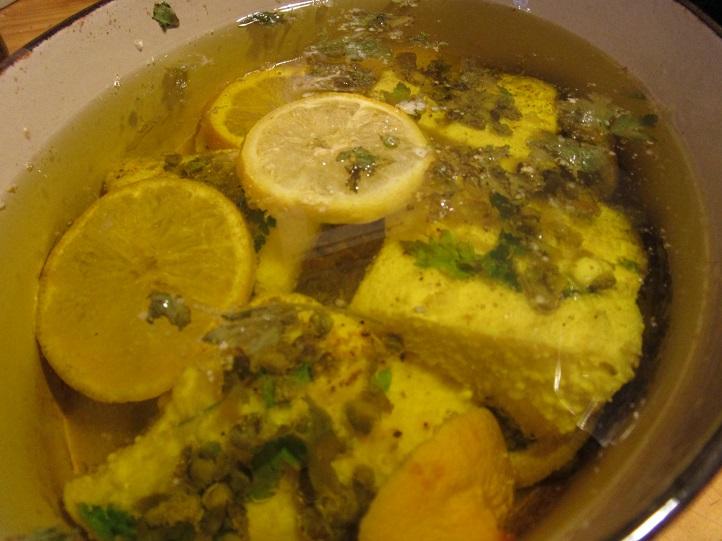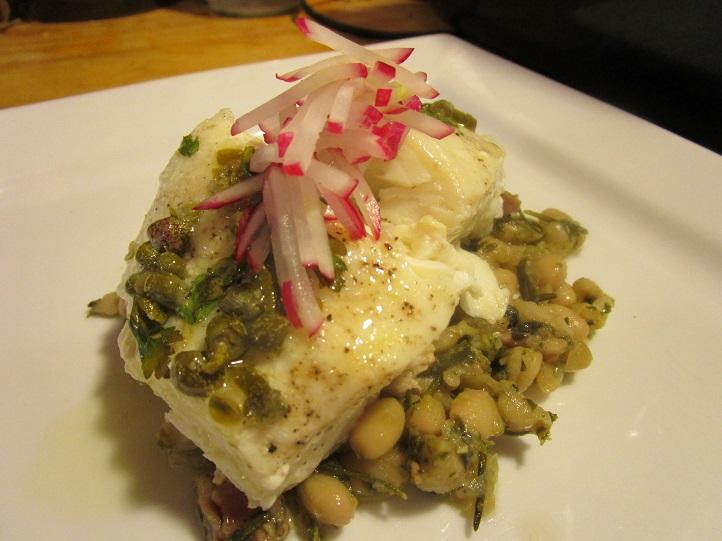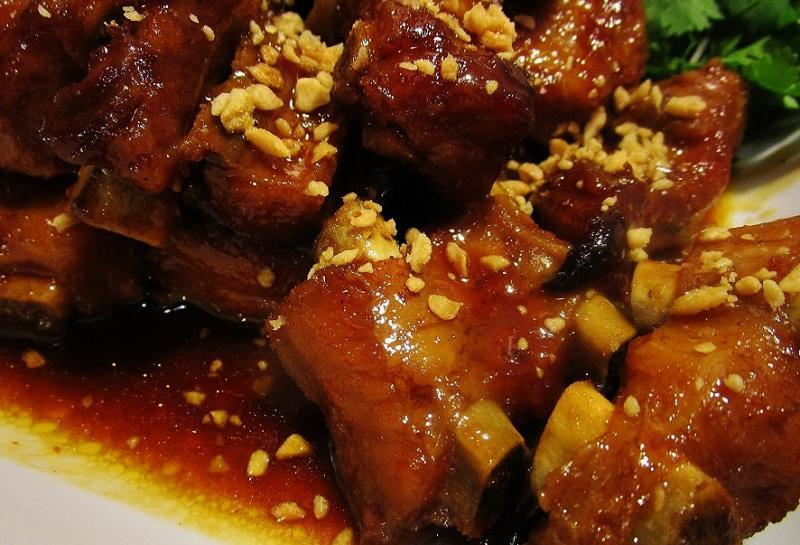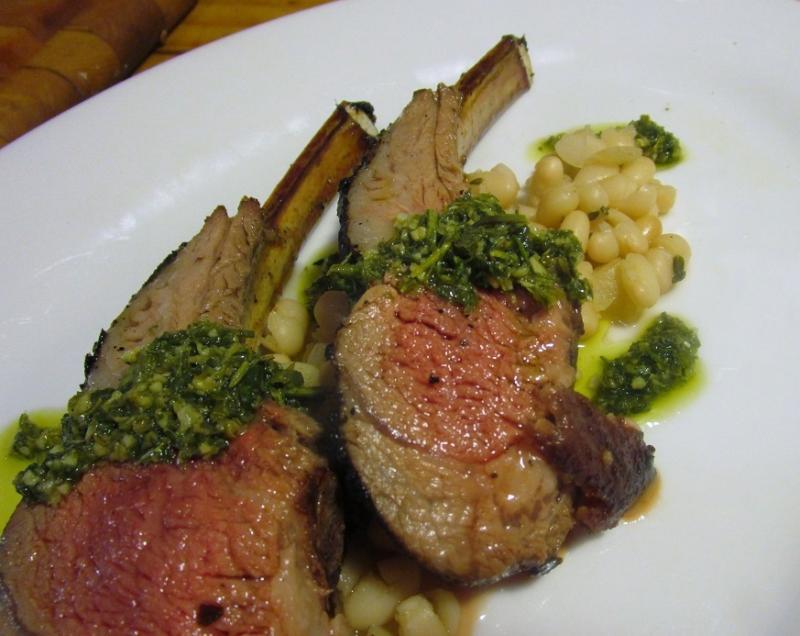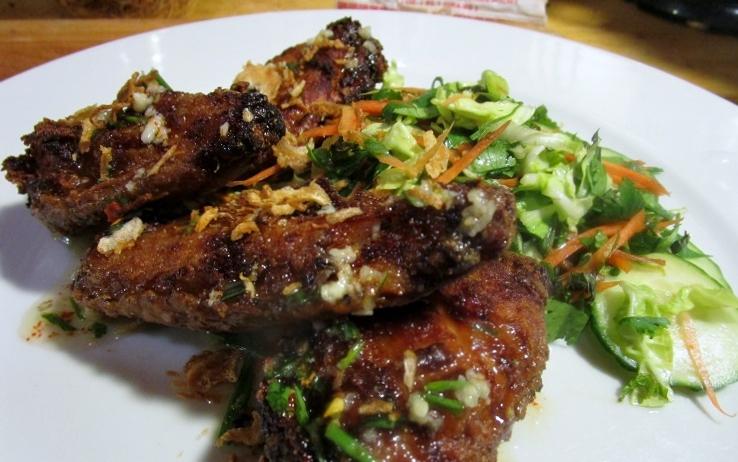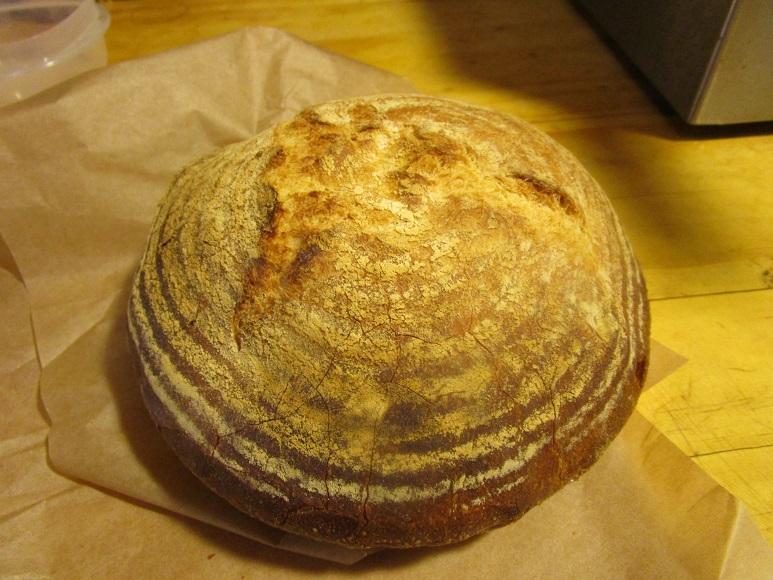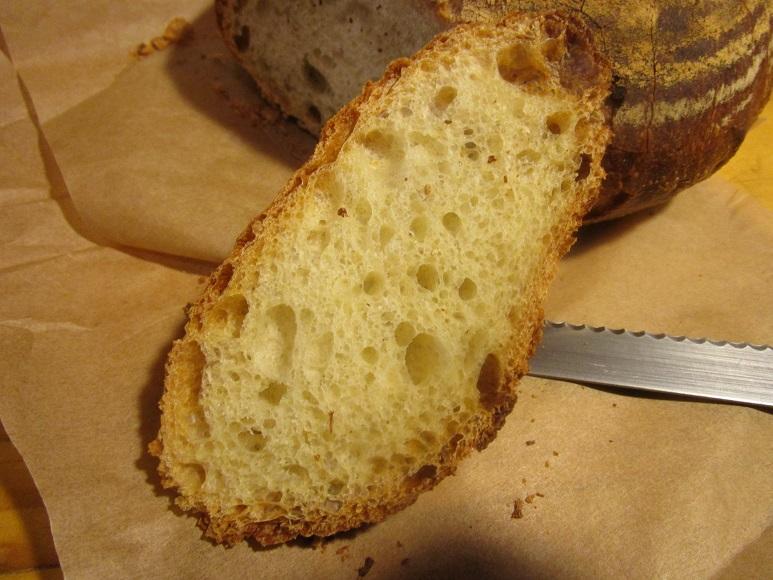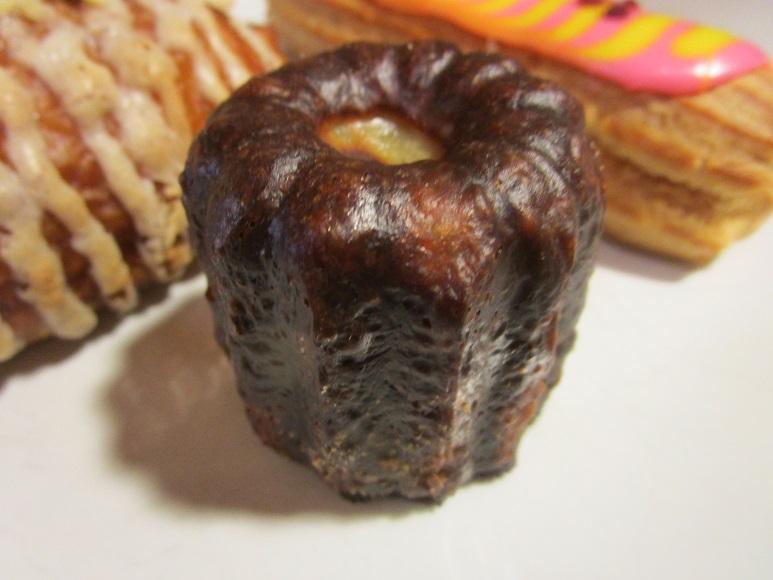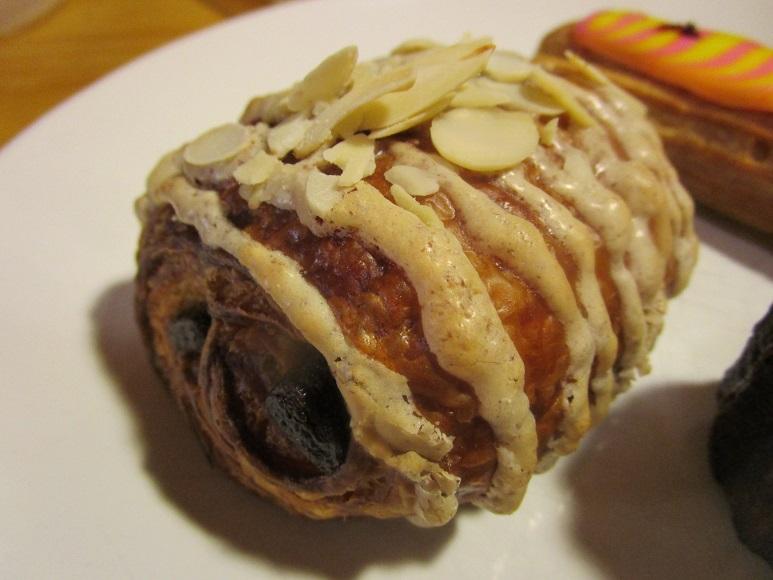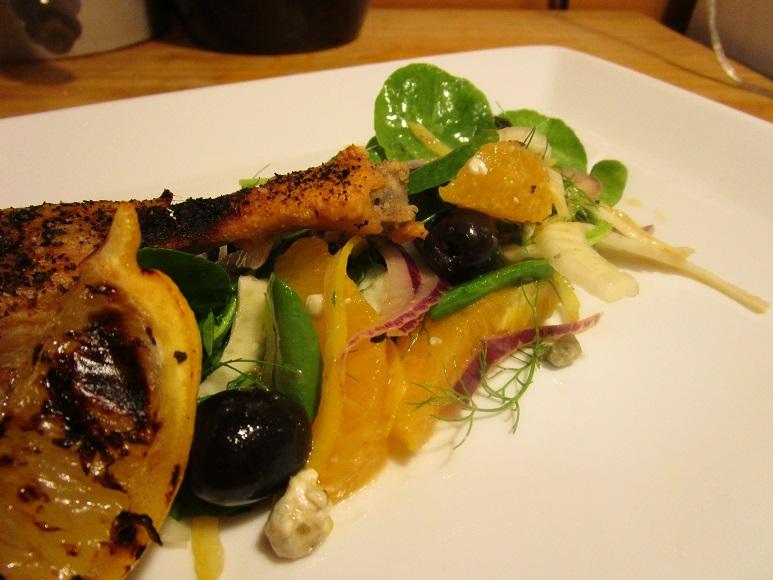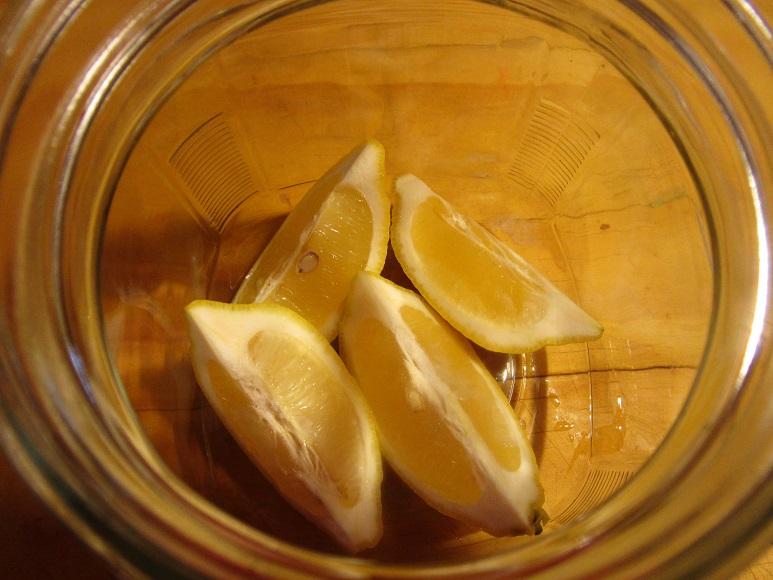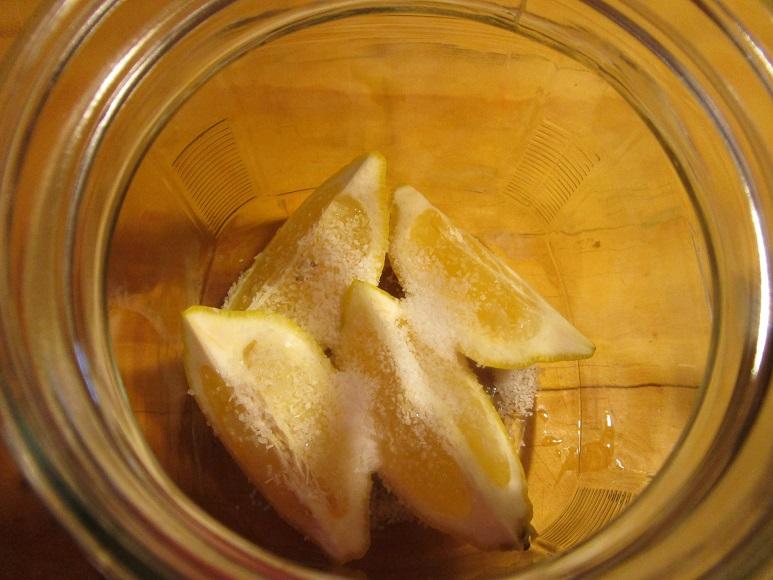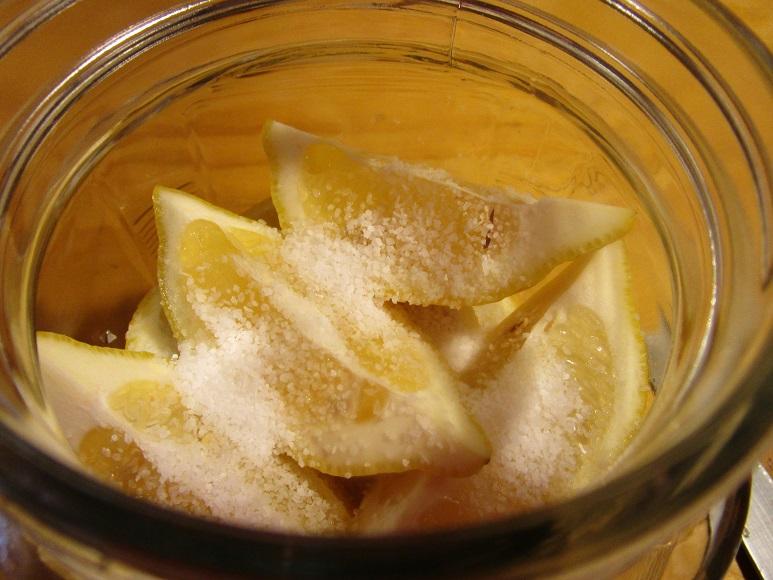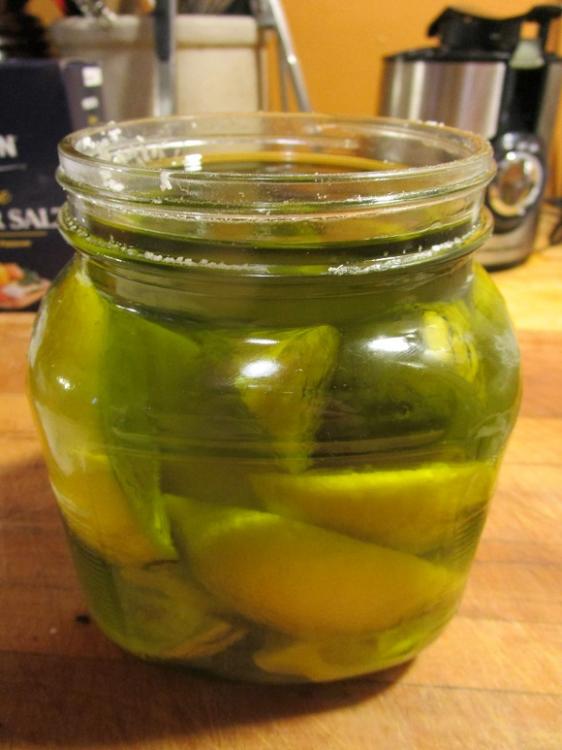-
Posts
5,035 -
Joined
-
Last visited
Content Type
Profiles
Forums
Store
Help Articles
Everything posted by David Ross
-
I'm sure they are not pedestrian and as delicious as any beer-cooked dish!
-
Pizza dough, made with ale, is proofing right now. We'll see..............................
-
I need some advice for my next dish. Last night I did seared sea scallops with a pea puree. That's it, plain and simple. What about adding a buerre blanc flavored with beer? What type of beer?
-
This is the Alaskan Brewing Smoked Porter I used with the beef cheeks. Vintage 2013. The label notes "enjoy it now or age it for several years."
-
For my first dish, I started with a recipe in the March issue of Saveur-“Beef Cheek and Stout Pie with Stilton Pastry.” I thought it would be the perfect starting point for a beef dish using a rare smoked porter that I had been storing in the pantry. My first taste of Smoked Porter was about 12 years ago when I was approached by the Alaskan Brewing Company to present a new recipe they had developed using Smoked Porter and showcase it in front of hundreds of folks at a local food show. Pretty ominous to say the least--cooking with an unfamiliar ingredient in front of a lot of people, not to mention the pressure of supporting the company that is trusting you to sell their beer. Our dish of Marinated Black Cod, (also known as Sablefish in the Northwest), with a Glaze of Smoked Porter was a hit and I’ve been making it every year since. Legend has it that the first batches of Alaskan Smoked Porter were smoked over alderwood boards pulled off an old salmon cannery. It’s a rich, thick, smokey, fragrant beer that lends itself to a variety of dishes. http://www.alaskanbeer.com/our-brew/limited-edition/smoked-porter.html The smoked porter is a rare, elusive beer--they only brew it once a year, timed to hit the store shelves in November. I’m lucky to live in the Pacific Northwest where we can readily find it, but I’m not so sure if it’s available in other parts of the country. If you’ve never worked with beef cheeks, beware. It’s a gruesome, Medieval-like task to trim the globs of fat off the various muscles of meat. Yet five hours braising low and slow in a Dutch oven and Bob’s your Uncle—a dish of tender, beefy beef supported by fragrant caramelized onions blanketed under a pungent crust layered with bleu cheese. It’s a basic braise--the beef cheeks are browned in a deep Dutch oven, then onions, carrots, garlic, and celery are turned in. A 16oz. bottle of smoked porter is added to deglaze the pot, then some bay leaves, fresh rosemary and thyme, black peppercorns, salt and a few juniper berries. Three cups of beef stock round out the braising liquid. Cover and braise the beef in a 300 degree oven for five hours, then gently remove the beef cheeks and cover and chill overnight. Strain the vegetables out of the sauce and refrigerate the braising liquid overnight. On day two, caramelize two large yellow onions, then add a cup of Worcestershire. In the end my tastes told me that the Worcestershire somewhat overpowered the flavor of the smoked porter, so next time I’ll adjust that detail. Add the reserved braising liquid to the onions, then stir in the beef cheeks (gently pulled into large chunks). That’s the base of the pie. I used the basic pastry reciepe from Saveur, but the texture was a bit too dense for my tastes. Next time I'll try layering the Stilton between sheets of puff pastry. In the end, this is a glorious, heady dish that would go quite well with a glass of the smoked porter. My biggest error was probably serving a braised beef cheek pie when it was sunny and 75 outside. Me thinks it’s a dish better suited to early January when the front lawn is covered with two feet of snow.
-
That's something I'd like to have for lunch today.
-
Wow, lots of great sounding dishes. Now let's see some photos of your dishes. I'll be posting a beef cheek pie with caramelized onions I made on Saturday. I used Alaskan Brewing Company's rare smoked porter. The crust of the pie included bleu cheese. It was a mix of very strong flavors, but definitely a dish I'll do again. The exception will be that I prepare it in early January when we have a few feet of snow outside. It was a bit heavy for a sunny spring weekend.
-
Beer. How does one introduce the subject of beer into a culinary arena? Like our two previous Cook-Offs (Apples and Citrus), the genre of beer cookery is vast—so overwhelming that it's hard to know where to start. At eGullet we have the answer; welcome to eG Cook-Off #69: Cooking with Beer. (Click here http://forums.egulle...cook-off-index/ for the complete eG Cook-Off Index). My first experience with beer wasn’t of the drinking persuasion, yet rather, an agricultural education in the 60’s about those tall, creeping vines that look like overgrown marionberry bushes. As a kid growing up in the Willamette Valley in Western Oregon, I was born into the land of hops—the plant whose fragrant flowers impart beer with a floral, herbal perfume and bitter, yet sweet flavor. My father worked for the Oregon Department of Agriculture and one of his primary responsibilities was working with commodity commissions to promote Oregon products to the world. I was destined to inherit my father's love of the bounty of Oregon and the wonder of hops. During the hot, lazy days of August, Father would drive us through the lush farmlands just north of Salem that are home to some of Oregon’s finest hop farms—communities like Woodburn, Gervais and Hubbard (home of the Oregon Hop Commission). To a novice, seeing how hops grow for the first time is stunning—a high-wire act of row after row of thick vines climbing toward the sky through a vast grid system of twine, wire and towering poles. Once harvested, Oregon hops are shipped worldwide and end up flavoring a huge variety of different styles of beer—everything from Budweiser, Coors Light and Miller Genuine Draft to trendy, artisanal styles of beer like IPA’s, Pale Ales, Stouts, beers flavored with raspberries and apricots, and the rare yet coveted smoked porters. Today, Oregon is known for being home to a number of highly-praised artisanal breweries, but growing up in the 60’s, my parents' taste for beer was simple, a sign of those times: https://www.youtube.com/watch?v=EZh66cyCCE8 Mother didn’t include much beer in her cooking, but in the summer she would braise locally-made German sausage in beer, handing them off to Father to grill on the Weber along with a mixture of sweet peppers and onions from the garden. Unlike seasonal, geographically limited ingredients, beer sees no boundaries. Yes, we’ll see seasonal beers spiked with pumpkin in the fall and apricots in the spring, but the crafting of beer, and thus cooking with beer, isn’t dependent on a seasonal growing cycle like most fruits and vegetables. And think of the storage advantages of beer. It doesn’t need a temperature-controlled environment nor does it spoil if it isn’t used within three days. Buy beer today and cook with it next month if you wish. A good starting point for cooking with beer is to consider the flavors that go into the making of beer—the grain, the water, the malt, the hops and flavoring agents, the style of the particular beer—then build your dish on those flavors. Beer-Braised Venison Stew in a rich, dark, stout beer gravy or silky Alaskan Black Cod napped with a sauce made from rare smoked porter—the possibilities of cooking with beer are endless. I'm working on a dish of braised beef cheeks, caramelized onions and puff pastry studded with English stilton. Let's get cooking with beer.
-
What really struck me is the high-quality of the shots of the food. Probably the best looking food I've ever seen on television.
-
The other night for dinner I did the first test run of the dishes I'll be teaching at my next class in May. A simple salad of pickled daikon, carrot and green onion with Thai bird chiles. The main is a Thai green curry with grilled prawns and rice. The base of the curry and garnishes are numerous-basil, mint, cilantro, fried garlic, cashews, green curry paste, yellow curry paste, coconut milk, lime, lime zest, and a few more things. Turned out pretty good for the first run, now I'll work on it some more and have some great dinners testing the dishes.
-
A great show and pleasure to watch. Netflix deserves a lot of praise for bringing this forward. Not something the likes of Bravo or FoodTV would ever consider. Not a commercial money-maker per se, but it demonstrates great food programming is popular and can generate revenue through subscription.
-
The season is underway here in Eastern and Central WA and we're seeing wonderful asparagus in the markets. I bought a nice bunch yesterday for $1.99, a good starting price for us in the Spring. I love any dish with asparagus this time of year, but two stand out. One was a dish of asparagus, morels and sautéed sweetbreads at Daniel Boulud at the Wynn in Las Vegas. That dining room is long gone but Boulud has a place now at the Venetian. My other favorite dish is one I came up with-Midori and mint sorbet served with prosciutto-wrapped asparagus. Sort of my take on prosciutto with melon.
-
We're in the midst of a wonderful spring halibut season in the Northwest. We're getting clean, meaty, fresh halibut out of Alaska daily. This is a recipe from Mario Batali- Olive Oil Poached Halibut, White Beans and Ham Hock in Herb Vinaigrette and Radish Salad-
-
Maltose is sold in a small plastic tub in Asian markets. It looks like thick honey. This dish is really easy once you have the ingredients. I happened to use pork riblets because they were on special at the meat counter of the market, but it would work well with any cut of pork ribs or pork belly. I buy the fried garlic at an Asian store. It's incredibly flavorful and comes in a large plastic container for $3.99. Great garnish on just about anything. Bring a large pot of water to the boil, then add 1 cup of Shaoshing rice wine, 2 tbsp. Szechuan peppercorns and 5 thick slices fresh ginger. Add the ribs and turn the heat down so the water is barely simmering. Cook the ribs for one hour. For the sauce, combine 6 tbsp. hoisin sauce, 4 tbsp. ketchup, 4 tbsp. Shaoshing wine, 4 tbsp. maltose, 2 tbsp. brown sugar, 1 tbsp. chili sauce (I used Korean chili paste), 4 cloves minced garlic, 2 tsp. minced ginger, 4 tbsp. soy sauce. Drain the ribs, cut into smaller pieces and toss with the sauce. Placed in a casserole, (I use a Chinese clay pot), cover and bake in a 375 oven for one hour, stirring the ribs in the sauce every 20 minutes. Place on a serving dish, spoon on extra sauce, sprinkle with fried garlic and sliced green onions.
-
- 560 replies
-
- 11
-

-
What a wonderful report.
-
Lamb with white beans and an herb mixture of garlic, thyme, oregano, parsley and rosemary, preserved lemon olive oil and a good dash of sherry vinegar.
- 560 replies
-
- 11
-

-
Please pass our eG condolences on. Very sad news.
-
- 560 replies
-
- 11
-

-
I leave the garlic in the olive oil, but too much garlic can give the oil a bitter flavor so if you think it's a bit too acrid with the garlic, certainly strain it out.
-
I second that wow. That is a plethora or restaurants of varying cuisines, styles and service standards. Le Cirque has always been my favorite of the haute French rooms, but I've been a little troubled as to why they go through Chefs every couple of years. They've always tempered my doubts with each of the talented Chefs they've brought in. Me thinks the tomato tart at Payard is going to the top of my "what dish to try first" on my next trip to Las Vegas.
-

Spokane Restaurants: Reviews & Recommendations
David Ross replied to a topic in Pacific Northwest & Alaska: Dining
The pastry Gods have graced Spokane with the recent opening of "Common Crumb" artisanal bakery. Common Crumb is owned by Jeremy and Kate Hansen of Sante' restaurant. FInally we have a bakery, patisserie and confectionary whose goods rival any bakery in Seattle, Portland, or San Francisco or Las Vegas for that matter. You will be challenged to find a "Canneles de Bordeaux" in any pastry case but in Spokane? (the last time I tasted this luscious, historic French pastry was at Sage restaurant at Aria in Las Vegas). They also serve delicious sandwiches, layered with charcuterie made in-house at their big Sister restaurant down the street. You must make a special trip to Common Crumb when you are in Spokane. And by the way, Sante' Chef Jeremy Hansen is a Semi-Finalist for Best Chef Northwest from the James Beard Foundation. Hand-wrapped and tied bread- The "crumb" is anything but common- Pastries- Canneles de Bordeaux- Almond Pain du Chocolat- Does your bakery make Hibiscus-Lemon Eclairs?- -
I'm so glad someone suggested preserved lemons and reminded me how delicious and unique they are. I served the preserved lemon two ways--a grilled quarter preserved lemon, the warm juice squeezed over roasted duck confit. Then I finely julienned some preserved lemon peel and tossed it in a salad of watercress, olives, sliced red onion, shaved fennel, bleu cheese and orange. The dressing was a blend of orange, grapefruit and lime juice, olive oil (from the preserved lemons), dried marjoram, cracked black pepper, Dijon mustard and salt. The flavors came together quite well. I got the duck confit a bit too salty this time, but the preserved lemon and the tangy citrus dressing cut through the rich salty duck. Enjoy.
-
My version of preserved lemons- Just three ingredients, Kosher salt, fresh lemons and good quality olive oil. Cut the lemons in quarters and place in a wide glass jar. Sprinkle liberally with salt, then continue adding layers of lemons and salt. Cover the jar and refrigerate for about 4 days for the salt to "cure" into the lemons. Drain the liquid and then add olive oil to cover the lemons. They'll keep for weeks. Tommorrow I'll be serving the preserved lemons in a salad alongside some homemade duck confit.
-
I'd forgotten preserved lemons. I've got a wonderful duck confit recipe that uses preserved lemons in a salad.


